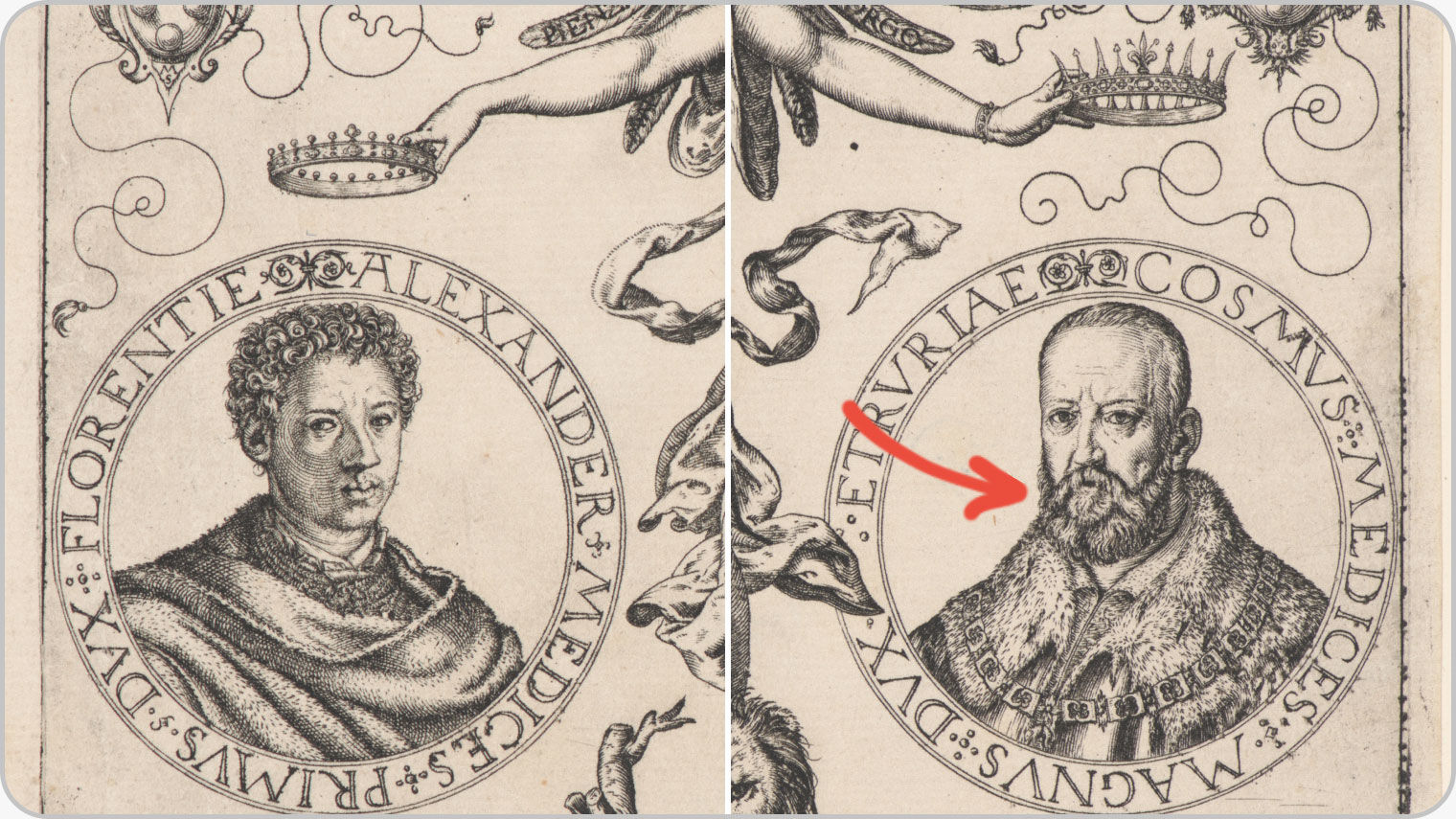So extra: See what he did there?
tl;dr:
1/9: This engraving celebrates Cosimo’s hard-fought wins, including his unification of Tuscany, long reign, and promotion to grand duke. It also gets a few digs in at the guy who came before him.
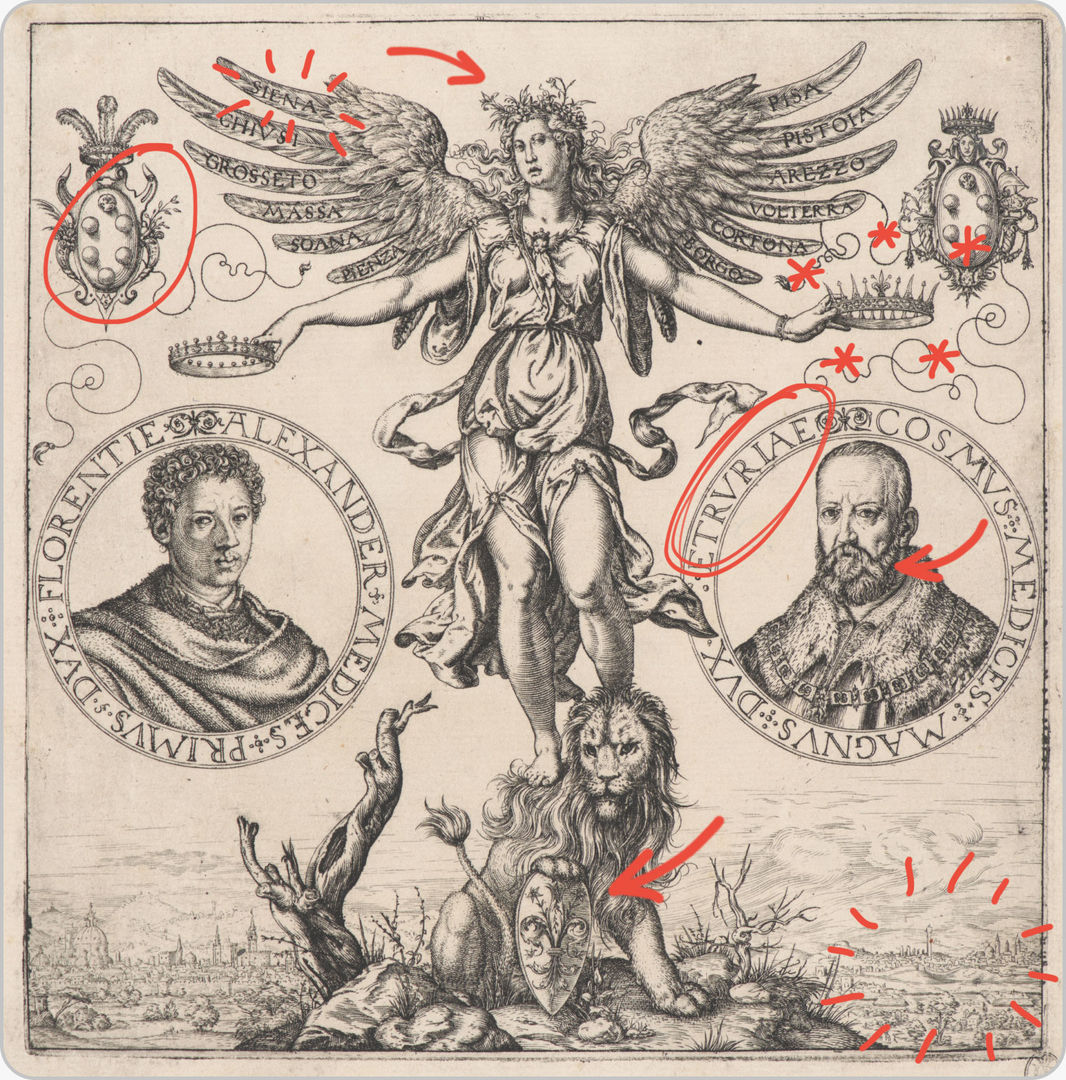
Continue the thread ...
2/9: People underestimated Cosimo de’ Medici. After all, he was only 17 when he was elected as the new ruler of Florence. He was from a “minor” branch of the Medici family. More powerful families challenged his authority. He was basically surrounded by haters.
And yet, with the help of his trusted inner circle, he rose to the top within a few decades, becoming the undisputed duke of Florence before leveling up to grand duke. Best revenge, in Cosimo’s case, was much more than paper.
3/9: This print celebrating Medici rule was created by Martino Rota, who also produced portraits of European monarchs such as the Holy Roman Emperor Maximilian II and his successor, Rudolf II. It isn’t the only work Rota created for Cosimo. Similar to this one, another portrait of the grand duke depicts him as mature, comfortable, and dressed like the ruler he is.
Cosimo vs. The World
4/9: A clear personification of Florence, the goddess Flora is recognizable from the lilies in her hair. She stands above the Marzocco lion, another celebrated emblem of the Tuscan capital, whose paw rests on a shield decorated with a lily.
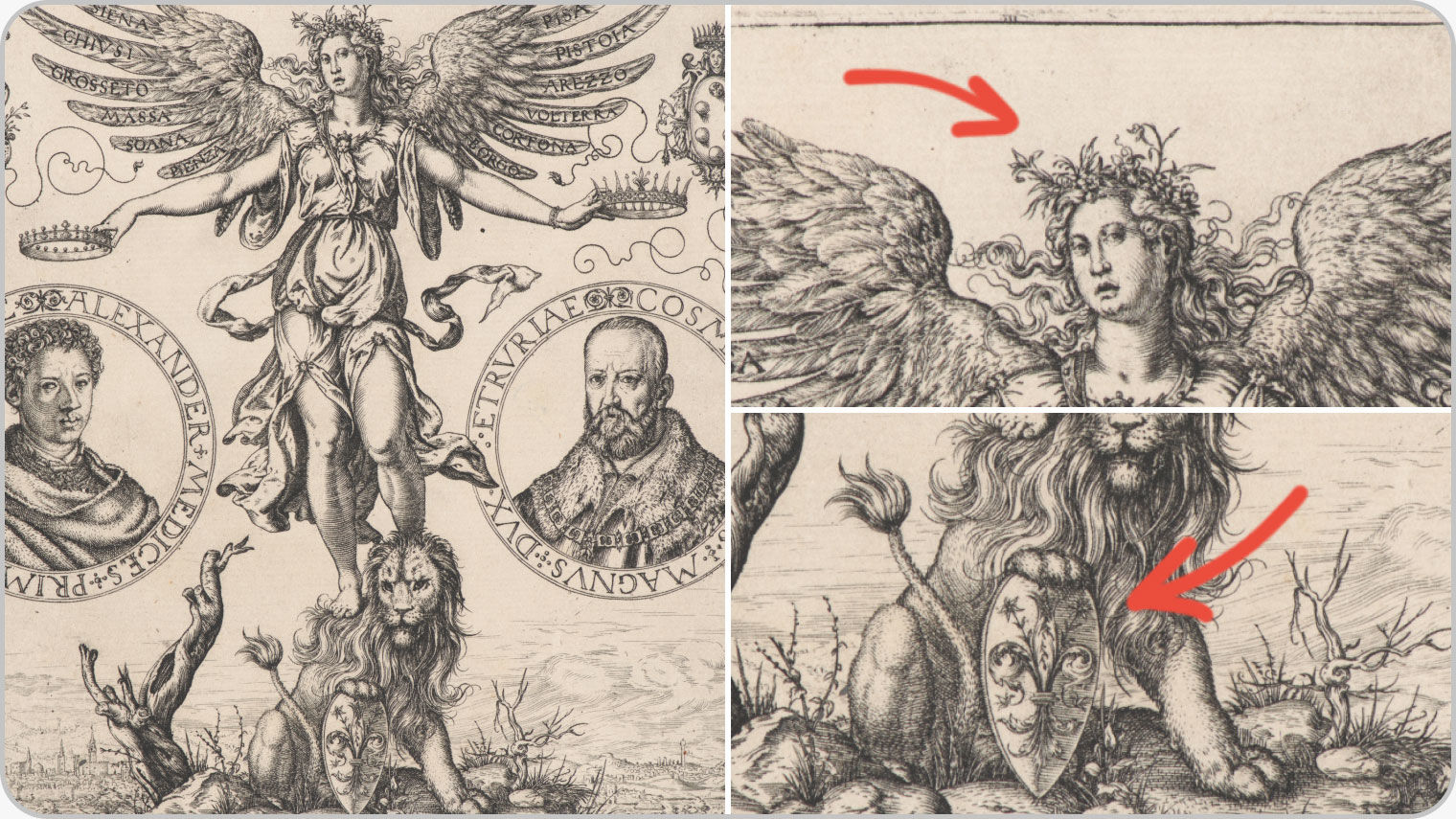
5/9: To her right is the broncone, a symbol of the Medici family tree and the continuity of its rule. Each feather of the goddess’s outspread wings is inscribed with the name of a major Tuscan town, starting with the rebellious Siena. All the cities indicated in the print had, by 1569, become united under the rule of Cosimo’s Florence.
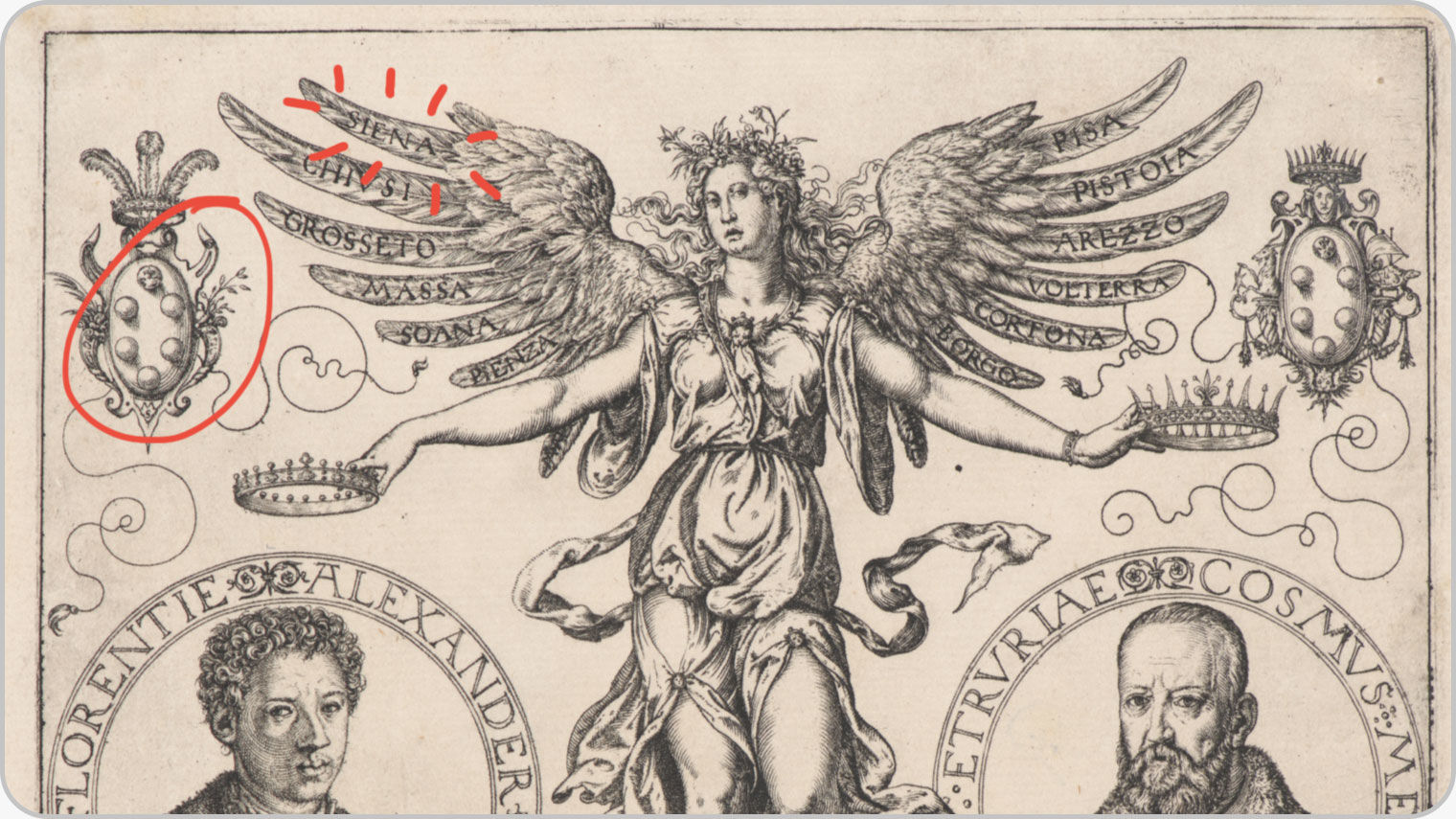
Cosimo vs. Alessandro
6/9: The goddess crowns two portrait medallions, as if celebrating the unity of the two branches of the Medici house. The medallion to her right features Cosimo’s cousin and unsuccessful predecessor Alessandro. In the inscription, Alessandro is described as the first “Duke of Florence.” The inscription on the portrait of Cosimo I declares him “Grand Duke of Tuscany.” See what he did there?
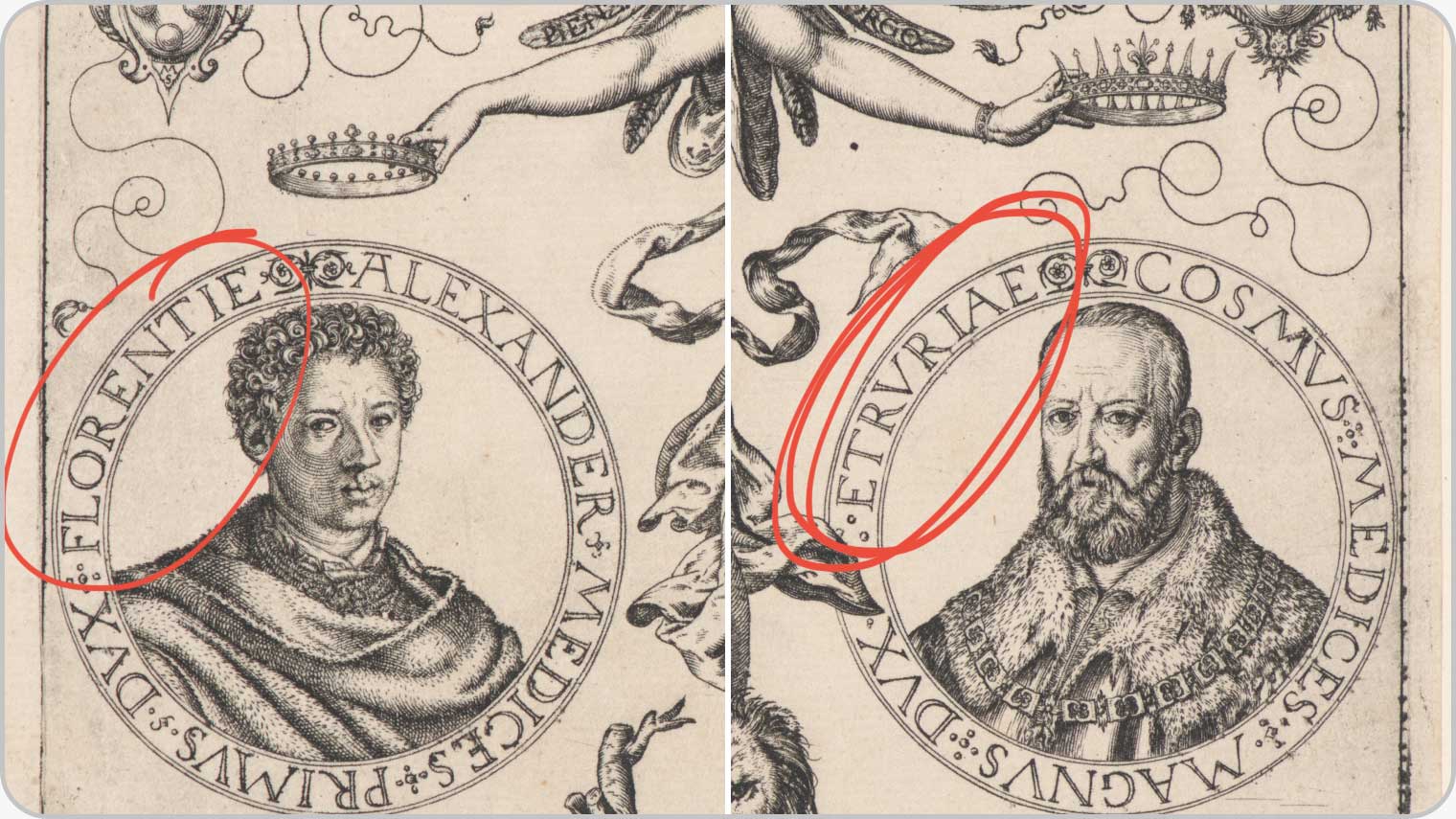
7/9: At first glance, there’s symmetry between the number of town names inscribed on each of the goddess’s wings and the size of the portraits. But there are two important differences between Cosimo’s and Alessandro’s medallions. For one, Cosimo’s crown is not the traditional ducal crown—it’s the elaborate grand-ducal version that he ordered for himself.
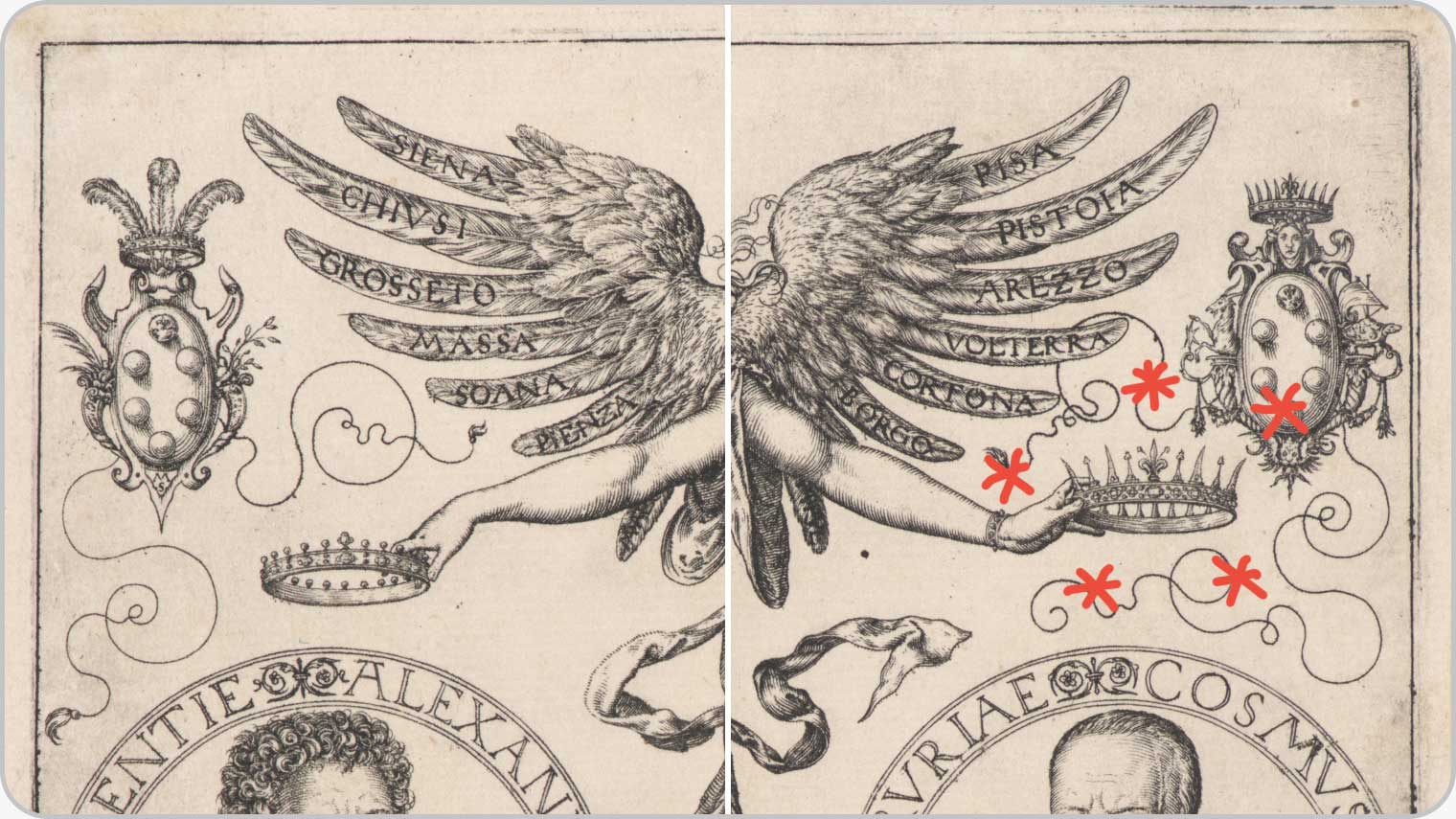
8/9: And while Alessandro’s portrait is set above the recognizable panorama of Florence, Cosimo is set above a splendid view of Siena, the last rebellious republic, which he had only managed to subdue and annex to his grand duchy in 1555. It is clearly Cosimo who deserves the title of grand duke of Tuscany, since he was the one to unite the region under Medici rule.
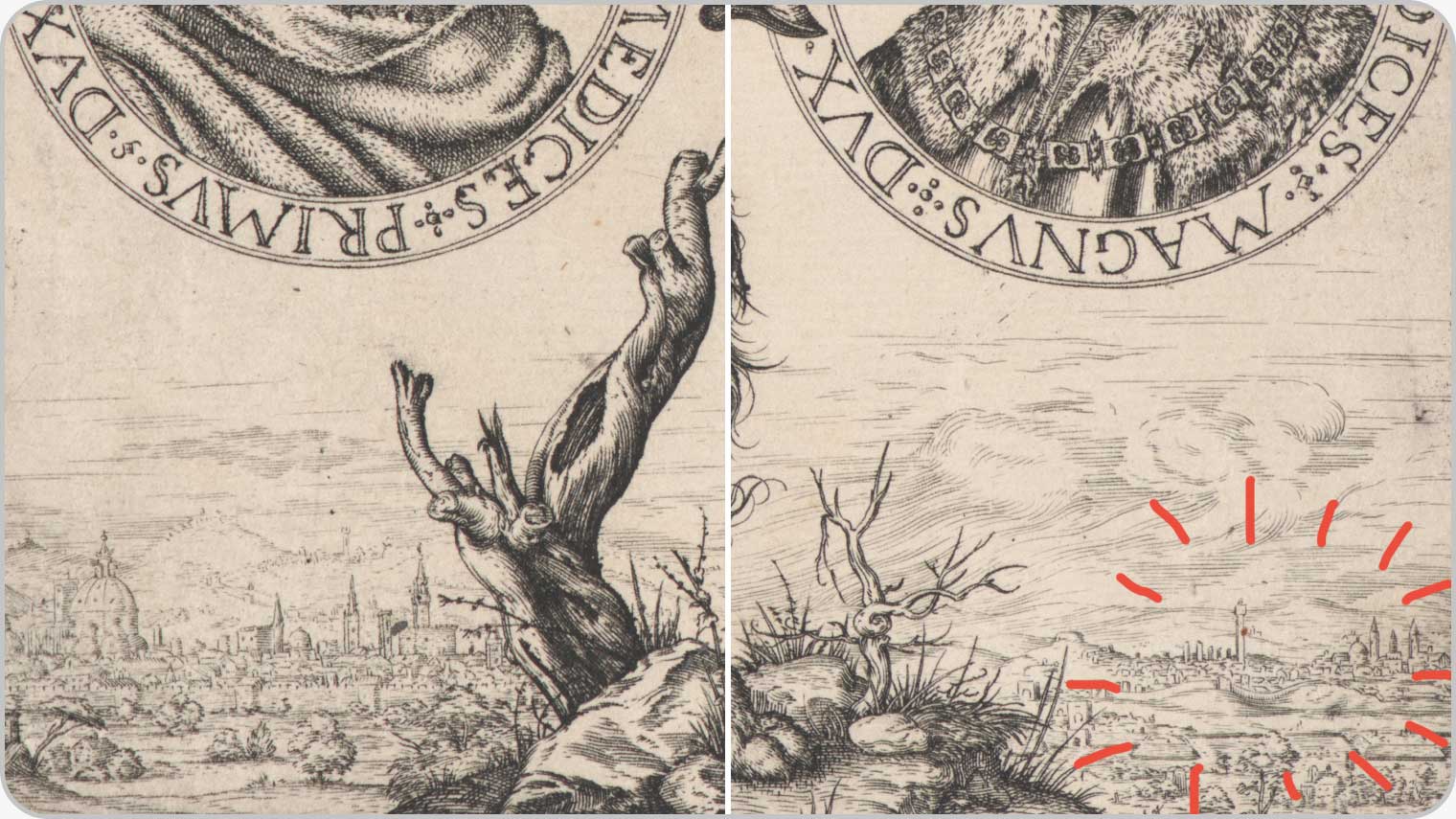
9/9: Finally, there’s the considerable age difference between the two rulers. Alessandro is shown as a young man—he held a short reign and met a violent end. By contrast, Cosimo is depicted in his early fifties, reflecting his longevity and success. #CosimoForTheWin
